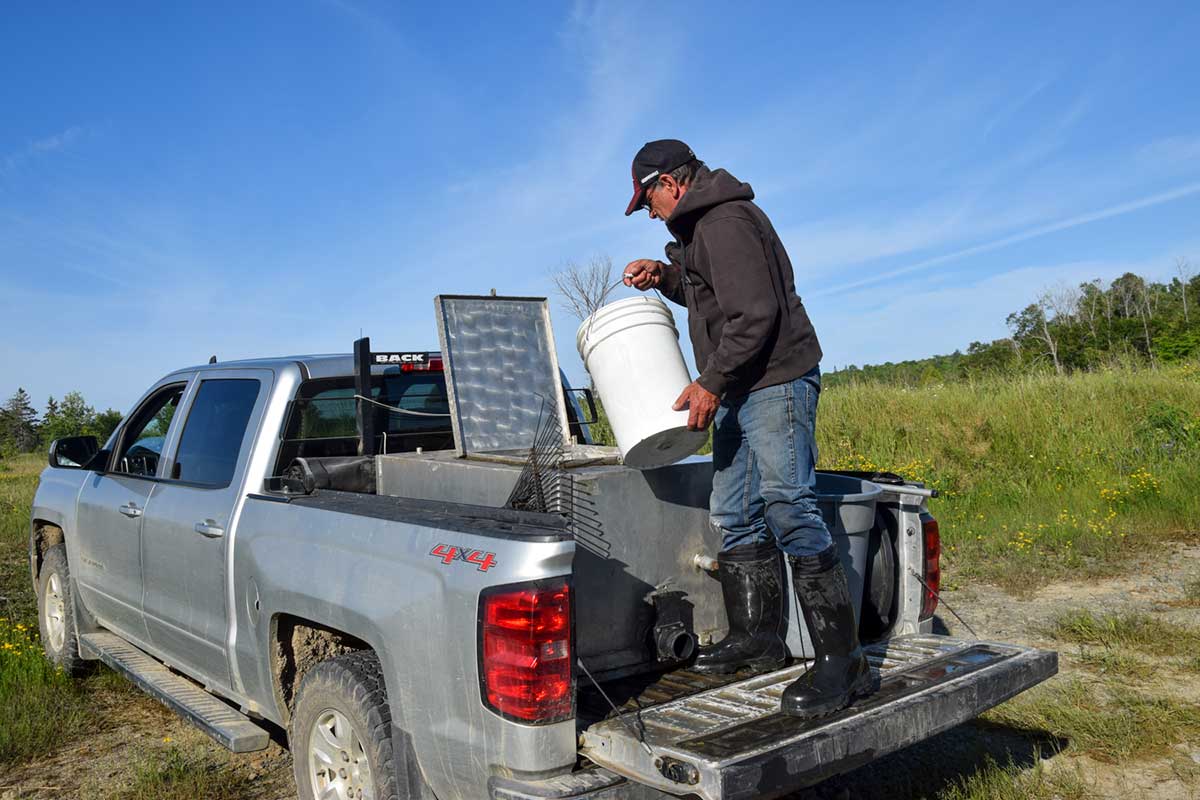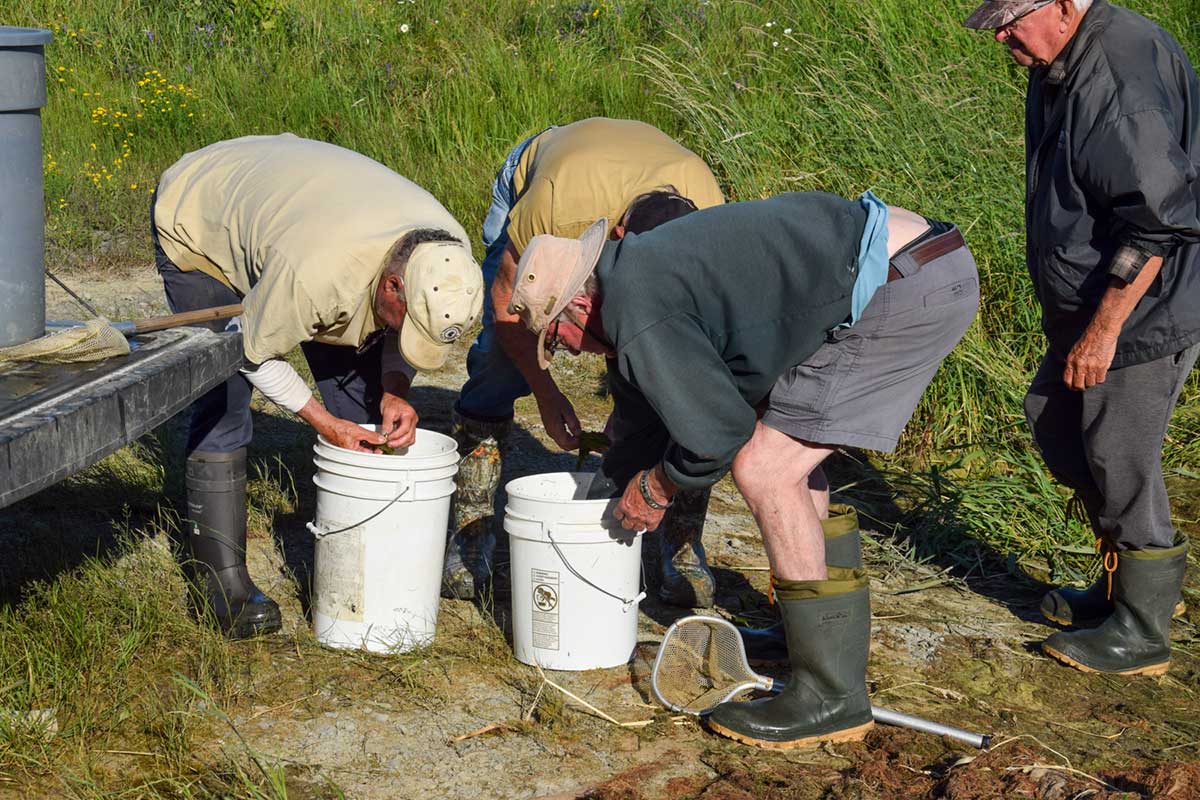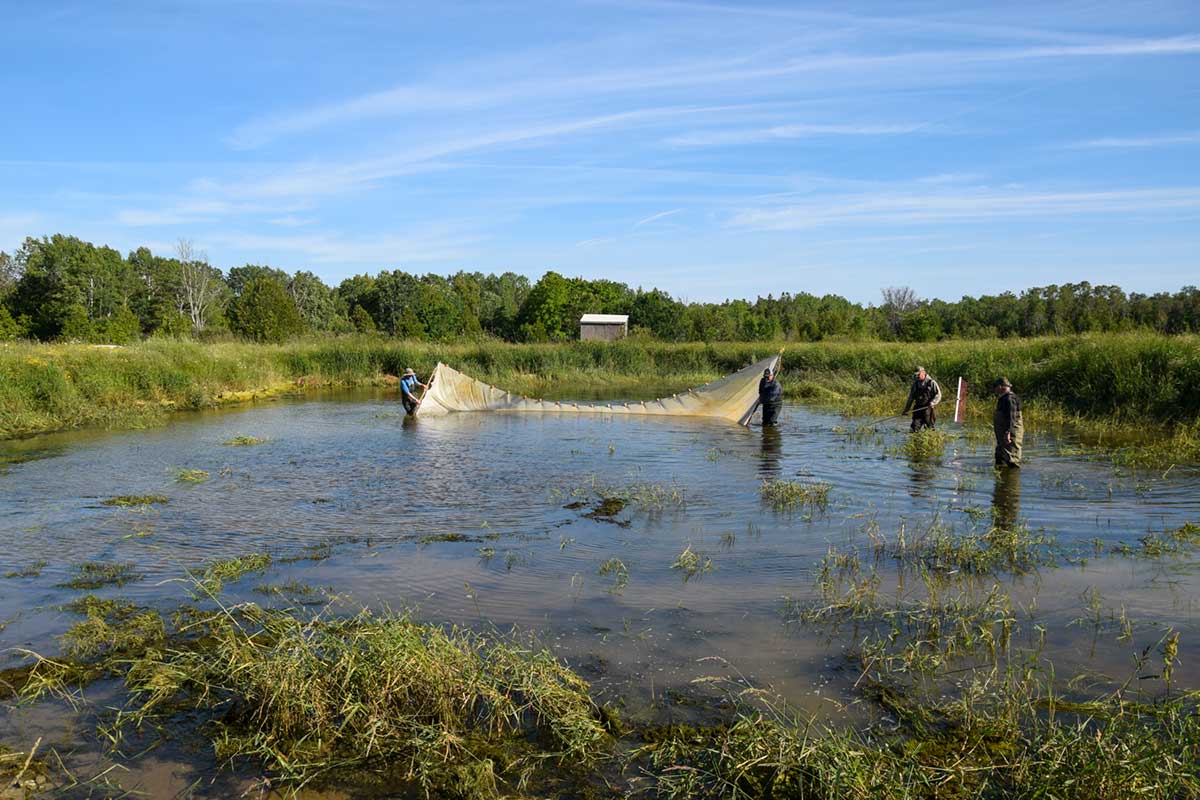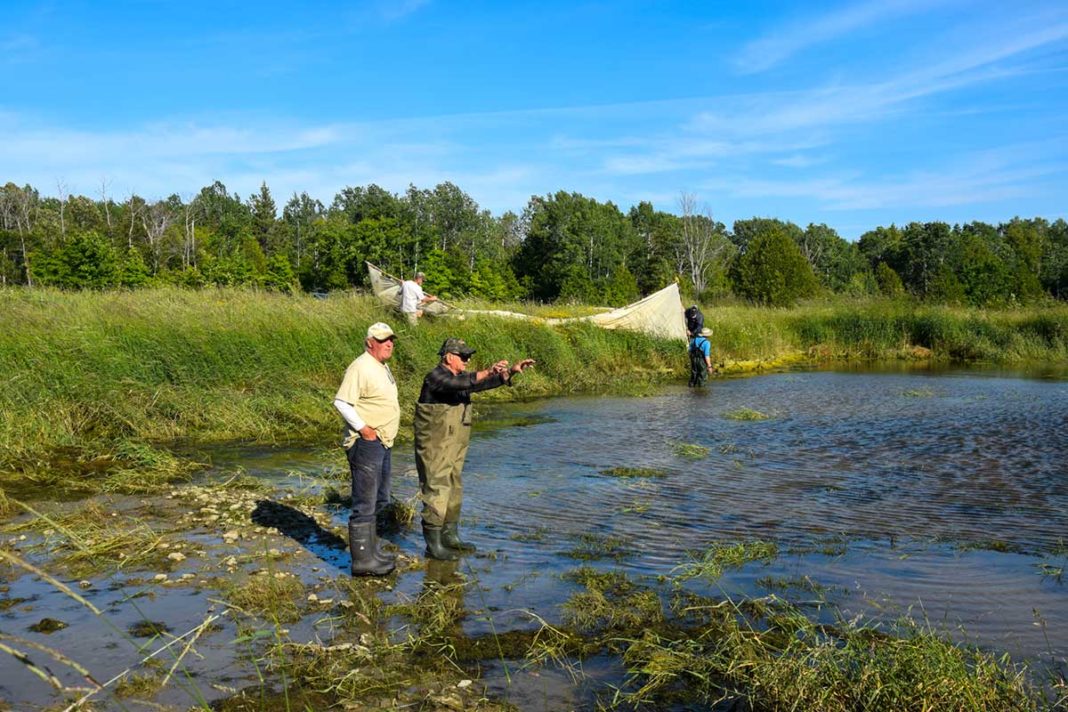SHEGUIANDAH – The road into the Little Current Fish and Game Club (LCFGC) fish ponds is not for the faint of heart, or at least those not piloting a pickup or SUV, but a dozen club members made the journey on a Wednesday evening to help finish off the harvest of this year’s walleye fry.
“It’s a great turnout,” said LCFGC president Bill Strain. “When there are lots of hands things go pretty smooth.”
The volunteers gathered, as they do every year for several days around this time, to move the fry placed there earlier this past spring from the club’s Sheguiandah hatchery.
As club member Kevin Hutchinson raked the dense moss from the fish pond out of the way, other members donned hip waders and secured the huge seine net, carrying it to the far end of the pool. As club volunteers gathered on the shoreline, dip nets and pails in hand, ready to sort the two-to-three inch walleye fry from the greenery caught up in the net, the volunteers with the seine net slowly and carefully walked the net toward their rubber booted colleagues.
When the net arrived close to the shore, the volunteers hunched over its length to capture the fry and move them into large white pails that were then dumped into the holding tank on the back of a pickup.
Even though many of the fry will be stocked into Shegiuandah Bay and the North Channel, where their parents had donated their eggs and sperm to the effort, the water in the holding tank itself comes exclusively from Pike Lake.
Mr. Strain explained that the water from Pike Lake is free of invasive species and diseases that might be found in the big water and precautions to avoid spreading contagion are paramount.
The LCFGC started their walleye recovery program back in 1986, at first they didn’t have a pond, but then the club built its first, “down by where Stan Ferguson’s mom used to live, but it was too small, so we moved up here.”

‘Up here’ is a goodly piece down Burnett’s Sideroad on property owned by an American friend of Mr. Strain. The pond system utilizes a symbiotic relationship with a nearby beaver dam through a sluiceway involving 6 X 6 timbers manually lifted into place to control the flow of water into the pond. At the other end of the pond a valve can be used to drain off some of the water to regulate the pond level as well.
The pond water is lowered this time of year in order to facilitate the harvesting of walleye fry. The small fish may look like peace loving minnows, but let them grow another inch or so and they turn into voracious cannibals with the larger fry feasting on their siblings causing the pond’s population to quickly dwindle.
Raising fingerlings from egg and sperm is mostly science, but experience adds a bit of art to the process as well.
“It has been an unbelievable year,” said Mr. Strain. “I have never seen anything like it. When we had those three days of hot weather, with oxygen levels of 2.5 and temperatures of 26 degrees, I thought we would lose most of them.” But with the temperatures abating in the days following that spike, this year’s cohort continued to thrive.
The team pulled four loads of fingerlings from the collection box that evening, and another the following morning, with the bulk of the fingerlings actually having been harvested in the previous week.
“I would like to thank all the guys who came out to help,” said Mr. Strain. “There are too
many to name them all, but there is one guy in particular—Jack Ferguson, Jack never misses, he always shows up and he is always on time. Again, thank you, in a few years your kids and grandkids will appreciate what you have done for them.”

Given the reports coming out of Ontario Fishing Guys, the walleye season has been fantastic so far this year. Solid evidence that the efforts of the LCFGC and those of other conservation organizations across the Island have successfully revived a fishery that at one time seemed all but moribund.
There is one message that Mr. Strain and his colleagues in the LCFGC would like to get out in the general public, something that would greatly assist their efforts. “If people would just put the big spawners, those over 26 inches, back and just keep the pan-sized fish (that are better eating anyway), it would make a big difference over time,” he said. The larger walleye each produce a huge amount of offspring.

In the meantime, the current LCFGC members are not getting any younger, noted Mr. Strain. “I’m almost 80,” he laughed. “We could use a few new (and maybe younger) members.”
Observing the good-natured banter taking place among the volunteers as they went about the business of harvesting fry, the camaraderie is well worth spending a few early summer evening hours helping out Mother Nature to bolster the Island walleye fishery.





